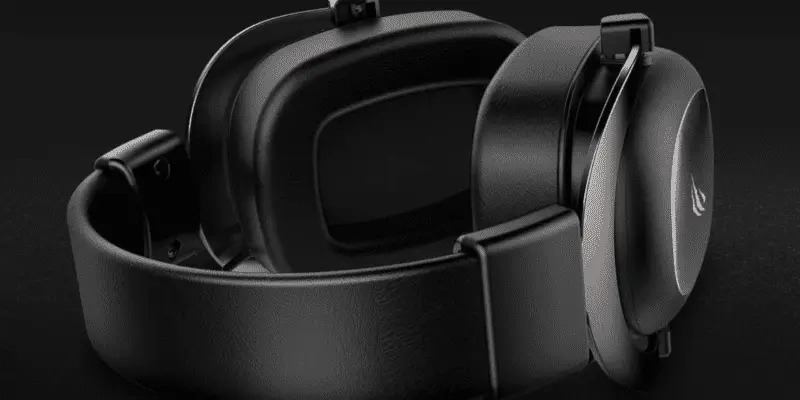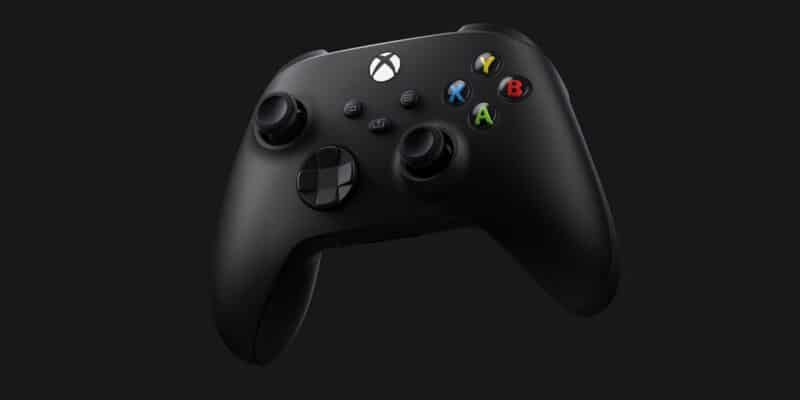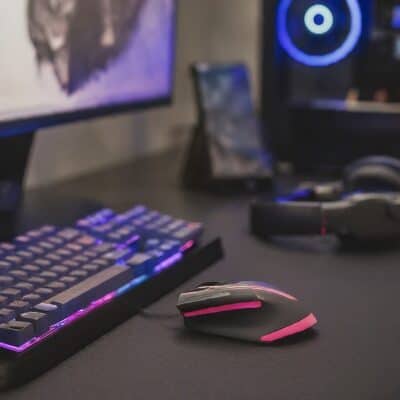Headphones, Blog
Healthy Headphone Use – 5 Amazing Things You Need to Know!
What is healthy headphone use? The outer ear, middle ear, and inner ear are the three sections…
…of the ear that work together to process sounds. The cochlea is a part of the inner ear…
…that contains microscopic hair cells. These hair cells aid in the transmission of sound signals to the brain.
The hair cells can be damaged by loud noise. When this happens, the cochlea loses its ability…
…to send sound messages to the brain. Inner ear injuries, unlike damage to other parts of the body…
…never recovers. Your hearing will deteriorate over time as more and more hair cells are damaged.
In here, we also have article about best headphone for fps game...
Before We continue talking about Healthy Headphone Use…
This is what Feb said…
Many children used headphones to aid distant learning during the pandemic.
If little children wear headphones, they may have problems recognizing speech…
…in noisy locations as early as their teens to early twenties, so I suggest parents…
…to talk to their children about listening at a safe volume and taking Loud sounds are terrible for us.
Healthy Headphone Use: How Does Sound Cause Hearing Loss?
Isn’t sound meant to be a tool for communication and environmental awareness?
Yes, sound is an important form of communication that also helps us to navigate our surroundings…
…nevertheless, the inner ear is extremely sensitive to the sound balance it senses.
In the ears, there are thousands of cells, some of which have small hairlike structures…
…called hair cells that transfer sound from the ears back to the brain, where it is further processed.
Excessive sound can permanently destroy these cells, disrupting the sound transmission system.
Excessive sound can disrupt the link between hair cells and nerve cells,,,
,,,causing damage even if the hair cells themselves are normal.
Healthy Headphone Use: How Loud is Too Loud?
The Centers for Disease Control and Prevention (CDC) contains thorough information….
…on numerous daily experiences and the volume, or decibel (dB), connected with them.
When it comes to headphone use, it’s crucial to remember that personal listening devices…\
…are adjusted to a maximum loudness of roughly 105 to 110 dB. For comparison…
…sound levels above 85 dB (equivalent to a lawnmower or leaf blower) can induce ear damage…
…after two hours of exposure, whereas sound levels between 105 and 110 dB can cause damage in five minutes.
A sound level of less than 70 decibels is unlikely to cause substantial ear damage.
This is vital to know because the maximum volume of personal listening devices (in both children and adults)…
…is higher than the harm threshold! As a listener, it’s critical to be aware that most technologies…
…might be utilized in potentially dangerous ways. Personal listening devices should…
…in the end, be comfortable for the listener.
Healthy Headphone Use: How Long is Too Long?
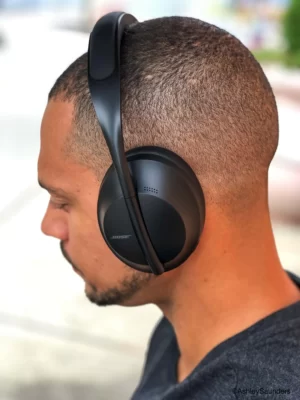
Aside from amplitude, the duration of sound exposure is a significant component that might lead to ear damage.
Simply put, louder sounds have a higher risk of causing more harm with less exposure.
Employers must provide hearing protection to employees who are exposed to 85 decibels…
…or more for more than eight hours, according to the Occupational Safety and Health Administration (OSHA).
While this may seem like a long time, even slightly higher sound levels from headphones can cause damage…
…in less than an hour, and it is simple to picture listening to music with headphones for an hour or more.
Importantly, listening at a comfortable volume for an extended period of time should be safe…
…while it is critical to strike a balance between duration of use and loudness of exposure.
Healthy Headphone Use: Use Noise-canceling Headphones
If you’re like a lot of people, you use headphones to drown out other noises…
…and you keep turning the volume up as the outside world gets louder.
Wear noise-canceling headphones to combat the constant increase in volume.
You can attempt passive noise-canceling headphones, which function primarily…
…by limiting outside sounds through a design, such as high-density foam headphones…
…that block your ear from outside noise. You can also use active noise-canceling headphones…
…which constantly monitor the sounds around you and generate soundwaves that cancel out the external noise.
Noise cancellation makes it possible to listen to audio content without raising the volume excessively. It can also help a passenger sleep in a noisy vehicle such as an airliner. In the aviation environment, noise-cancelling headphones increase the signal-to-noise ratio significantly more than passive noise attenuating headphones or no headphones, making hearing important information such as safety announcements easier
Noise cancellation according to Wikipedia
Noise-canceling Headphone on Work Rift
Sennheiser Momentum 3 Wireless
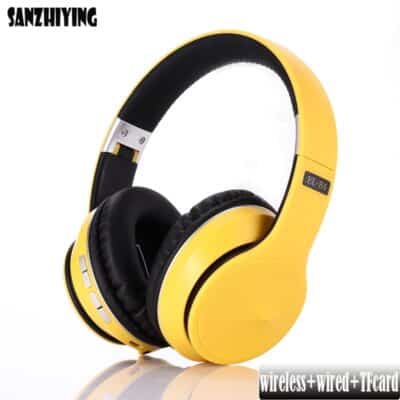
Pros
- Energetic, rhythmic presentation
- Convenient usability features
- Effective noise cancellation
Cons
- Average battery life
Sennheiser Momentum Wireless headphones are another excellent alternative.
The third-generation Momentum Wireless cans follow in the footsteps of two previous models…
…and this new pair continues the trend. The finish is still excellent, with oval-shaped earcups…
…sheepskin leather earpads, and stainless steel sliders. The on-ear controls have been enhanced…
…allowing you greater control over your music.
They’re available in all-black or’sandy white,’ with a’sandy white’ model on the way.
Because these headphones fold up, they are great for commuting or traveling.
In addition to aptX, AAC, and SBC Bluetooth, the Momentum Wireless supports aptX Low Latency…
…which seeks to improve audio and video content synchronisation.
Crucially, they sound substantially better than their predecessors, promising an exciting…
…current, and tremendously perceptive listen that you can’t help but enjoy.
That sonic success is backed up by improved usability features as well…
…albeit keep in mind that battery life is only 17 hours compared to Sony’s 30-hour claim.
Wear Actual Headphones, Not Earbuds
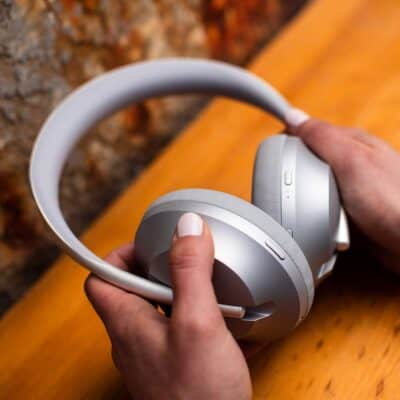
Despite the fact that the phrases are sometimes used interchangeably,,,
,,,headphones and earbuds are not the same. The small, generally silicone or hard plastic devices…
…that sit snugly in your ear are referred to as “earbuds.” “Headphones,” on the other hand…
…are earphones that fit over your ears and usually cover the full ear canal.
The distance between sound and eardrum in headphones and earbuds may be small, but it’s critical in the long run.
Sum Up
Taking pauses from your headphones, for example, can help avoid headphone-induced hearing loss.
The longer you listen to loud music, the more likely your ears may be damaged.
Every 30 minutes, or every 60 minutes, take a 5-minute or 10-minute break.
If you minimize your exposure to loud sounds, you can avoid hearing loss.
Wearing headphones can help protect your hearing, but be sure they fit properly.
Conclusion
And, that is all for healthy headphone use
How do you use your headphone on daily basis?
Let us know your experience on the comment section!
Related Articles For You!
- You may like: The 6 Best Gaming Accessories to Have an Excellent Gaming Experience!
- You may enjoy this article about: Best Inexpensive Headsets for Gaming – 3 Top Pick on Work Rift!
- This article may be interesting: Review of the Kotion G2100 – Amazing Gaming Headset You Must Have!
Our Latest Posts:




